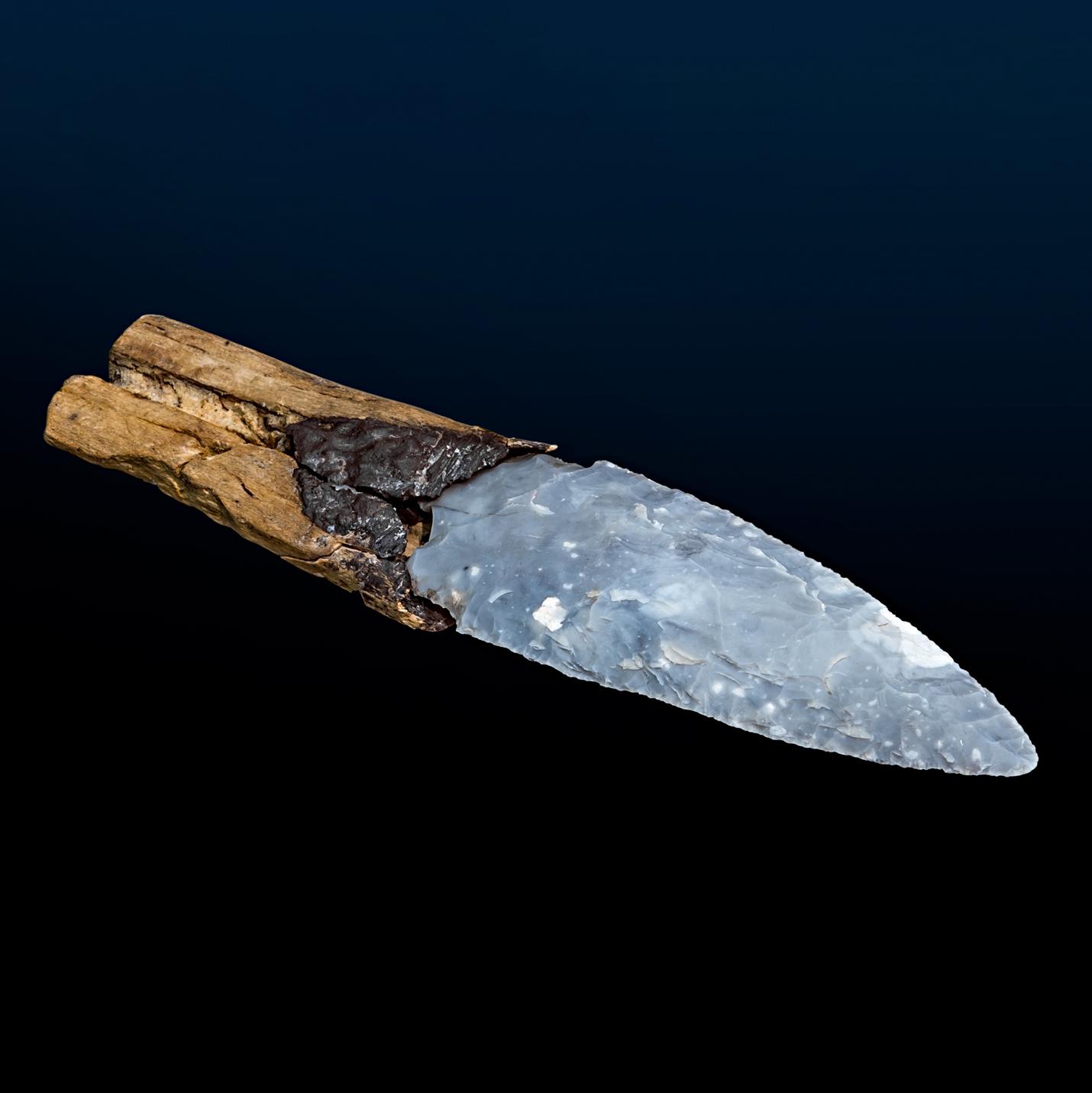The study of ancient artifacts often provides a fascinating window into the lives and cultures of our ancestors. One such intriguing discovery is the uniquely preserved hafted flint dagger, unearthed in Allensbach, southern Germany, and dated back to the year 2900 BC. This remarkable find not only captivates archaeologists and historians but also sheds light on the intricate trade networks and technological advancements of the time.
The Significance of the Hafted Flint Dagger

The hafted flint dagger discovered in Allensbach, southern Germany, is a remarkable relic that offers valuable insights into the technological and cultural sophistication of the people who lived during the late Neolithic period. Crafted with impressive skill, the dagger’s blade is made of high-quality flint, a material prized for its sharp and durable cutting edge.
What makes this artifact truly unique is the remarkable preservation of its haft, or handle. The haft, which would have been used to securely grip the blade, is composed of organic materials such as wood and animal hide, elements that typically do not survive the test of time. This exceptional preservation allows researchers to gain a deeper understanding of the manufacturing techniques and materials employed by the craftspeople of that era.
The Dagger’s Origins and Trade Networks

Further analysis of the hafted flint dagger has revealed that it was not locally produced, but rather an import from northern Italy. This discovery is significant, as it sheds light on the expansive trade networks that existed during the Late Neolithic period. The movement of goods, ideas, and technologies across vast distances was a hallmark of this era, and the presence of this Italian-made dagger in southern Germany is a testament to the interconnectedness of ancient societies.
The import of this dagger from northern Italy to southern Germany suggests that the people of Allensbach were engaged in a complex system of exchange, where specialized goods and resources were traded across regional and even international boundaries. This exchange of goods and knowledge was likely driven by a variety of factors, including the need for raw materials, the desire for prestige and status, and the dissemination of cultural and technological innovations.
The Craftsmanship and Cultural Significance
The exceptional craftsmanship displayed in the creation of the hafted flint dagger is a testament to the skill and ingenuity of the artisans who produced it. The meticulous attention to detail in the shaping and sharpening of the flint blade, as well as the intricate construction of the haft, demonstrate a deep understanding of the properties of the materials used and the techniques required to create such a functional and aesthetically pleasing tool.
Beyond its technical merits, the hafted flint dagger also holds significant cultural and symbolic importance. Weapons and tools of this nature were not merely utilitarian objects but often carried deep social and ritual meanings within the communities that used them. The dagger may have been a symbol of status, power, or even religious significance, and its discovery provides valuable insights into the beliefs, customs, and social hierarchies of the people who once inhabited the Allensbach region.
Conclusion
The discovery of the uniquely preserved hafted flint dagger in Allensbach, southern Germany, is a remarkable find that continues to captivate and inform our understanding of the past. This artifact, with its exceptional craftsmanship, international origins, and cultural significance, serves as a tangible link to the lives and societies of the Late Neolithic period.
As researchers continue to study and analyze this remarkable dagger, we can expect to gain even deeper insights into the technological, economic, and social dynamics of this fascinating era. The preservation and study of such ancient artifacts are crucial in expanding our knowledge of the human past and celebrating the ingenuity and resilience of our ancestors.